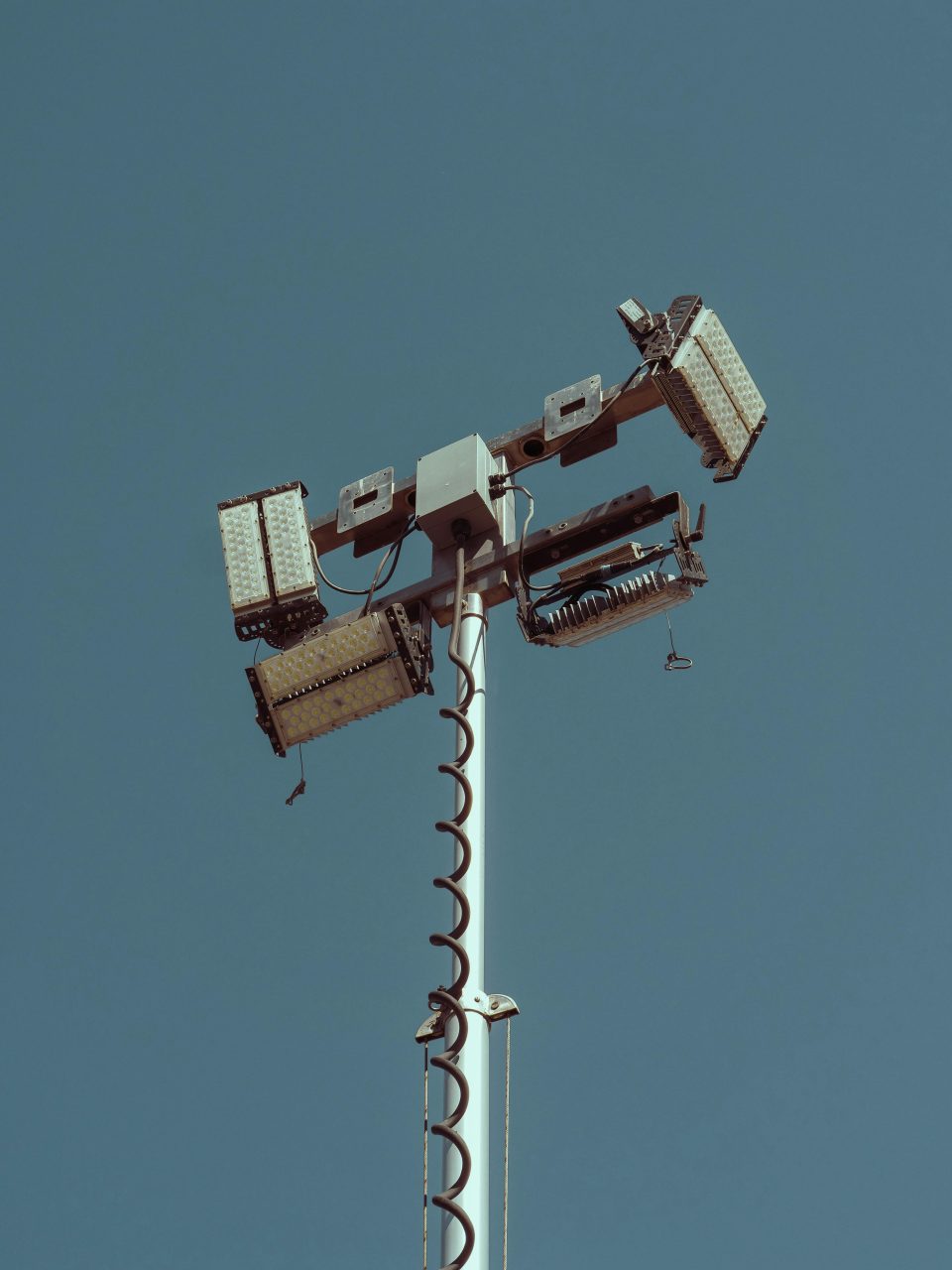Modern Computer Vision (CV) applications are executed on the edge, i.e. directly on remote client devices. Edge computing depends on high speed and low latency to transfer large quantities of data in real-time. That’s exactly what 5G provides the best. Moreover, applications like edge computing are necessary for 5G to sustain its expansion and coverage.
Applications such as CV and Artificial Intelligence (AI) can greatly benefit from combining 5G and edge computing. Edge devices can gather, process, and analyze photos and videos independently without sending the data to the cloud for processing. In addition, engineers connect devices to the extensive Internet of Things (IoT) via 5G.
A Brief Overview of 5G Technology
The 5-th generation of mobile networks is the latest standardized generation of mobile systems (the first 5G standard, 3GPP Release 15 – published in June 2019). It increases the speeds enabled by 4G by 10 times with the help of the so-called new radio interfaces and new frequency bands. That opens up new opportunities for the development of services in different market segments.
The 2020-2030 decade adopts the 5G network infrastructure. It is evident that each new generation of mobile network improves two important features, namely increased data speed for data transfer and reduced latency (packet delay).
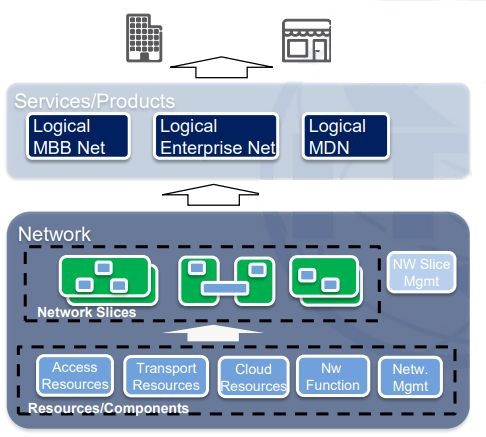
According to the ITU-2020 standard, 5G possesses the following characteristics:
- Latency of the air link (on the new 5G radio) is less than 1 ms (for certain time-critical services).
- End-to-end (from the terminal device to the core of the network) is less than 10ms.
- Density of connected devices – 100x compared to LTE (the wireless technology).
- Capacity per area is around 1Tbit/s/km2.
- Spectral efficiency of the system: 10bit/s/Hz/cell.
- Maximum (peak) flow per connection – 10Gbit/s.
- Energy efficiency is improved by >90% compared to LTE.
Introducing new technologies like edge computing and the 5G wireless networks has generated large expectations across many industries. To implement computer vision over 5G, computing is now done at the edge, where people and devices are physically located. This provides exceptional levels of power and connectivity.
Computer Vision Set up and Implementation With 5G Technology
Zahidi et al. (2024) constructed an agricultural robotic system with an edge server and a private 5G connection. The robot aimed to pick strawberries and communicate over a 5G network to enable the picking of strawberries. The researchers’ goal was to design a fruit-picking robot that would function as fast as a human picker. Also, they created a robotic perception system to mimic human vision.
System Architecture
The system architecture of the fruit-picking robot is shown in the figure below. The components include image gathering, semantic segmentation, grid map generation, action planning, and grip manipulation.
The robotic system consisted of an arm with a gripper, an edge server, a private 5G connection, and a laptop for the grid map generation. Researchers placed heavy computing tasks on the edge server, such as 4-class segmentation.
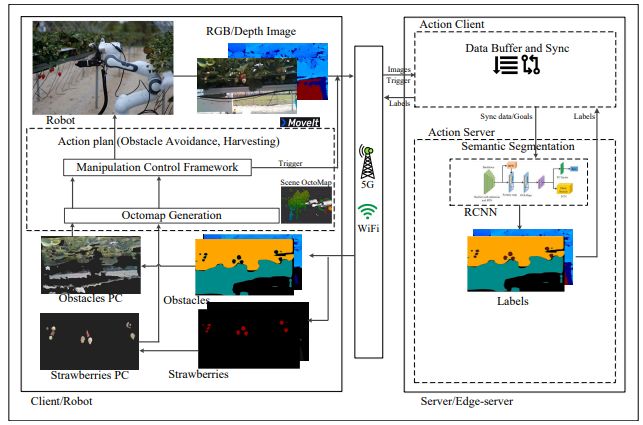
The robot transferred the images to the edge server via camera stream and service calls. At certain moments, it updates the depth of the segmented images.
Experimental Setup
The experiments took place on a farm at the University of Lincoln, UK. The farm possesses a test facility for growing strawberries, consisting of two plantations. Researchers performed several field tests and collected the corresponding images for different growth phases. They took images with an industrial RGB camera, Intel D435i.
Researchers took 140 training set images at different times of day, season, month, and illumination conditions. Images consist of different shadows, inside the plantations, and with several camera orientations.
The test dataset included 70 images. The testing measured the models’ performance and efficiency. They recorded network throughput and prediction time delay at 30 frames per second. Also, the frame resolution was 840×480 for both depth and RGB images.
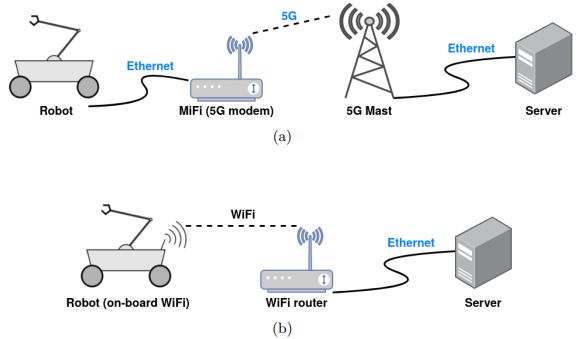
The network communication was done over 5G and Wi-Fi networks. The network latency tests proved that 5G is a stable and appropriate mode of communication for agriculture operations.
Image Segmentation
Robots were operating in an open plantation where strawberries were grown. Images were gathered for four months. The images were processed in 3 steps: ground-truth annotation, depth image, and bounding box annotations as shown in the figure below.
Researchers utilized Mask-RCNN and employed the D2Go toolkit for deep learning. Then they measured accuracy, latency, and prediction between the edge and the local platform. Moreover, they measured the system’s performance with a tailored, data-oriented task by performing semantic segmentation on the edge server for agriculture robotic applications.
Researchers segmented the images into 4 categories:
- Rigid obstacles: All objects the robot should avoid as obstacles. They included humans, pipes, and rigid structures.
- Canopy: Marking the plant of the strawberry as a canopy.
- Strawberries: This class belongs to ripe/unripe strawberries, while budding strawberries were not included.
- Background: They marked the rest of the region as background.
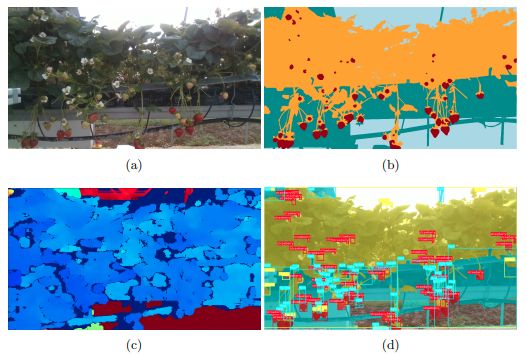
5G Impact on Computer Vision Applications
5G has already proven its major impact in various sectors and industries. Here we mention some of the most important aspects of 5G in computer vision applications.
Edge Computing via 5G
Edge computing deployments can take many forms, but generally fall into three categories:
- Remote IoT devices are dedicated to a specific purpose, such as a device that manages a building’s security system. Or a camera with a computer that performs quick object detection and then transfers the findings to a central server.
- Small, remote data centers (1 to 10 racks) that provide significant processing and storage capacity.
- Smart grid devices, or autonomous vehicles with changeable locations, need distributed computing features and stable communication links (5G).
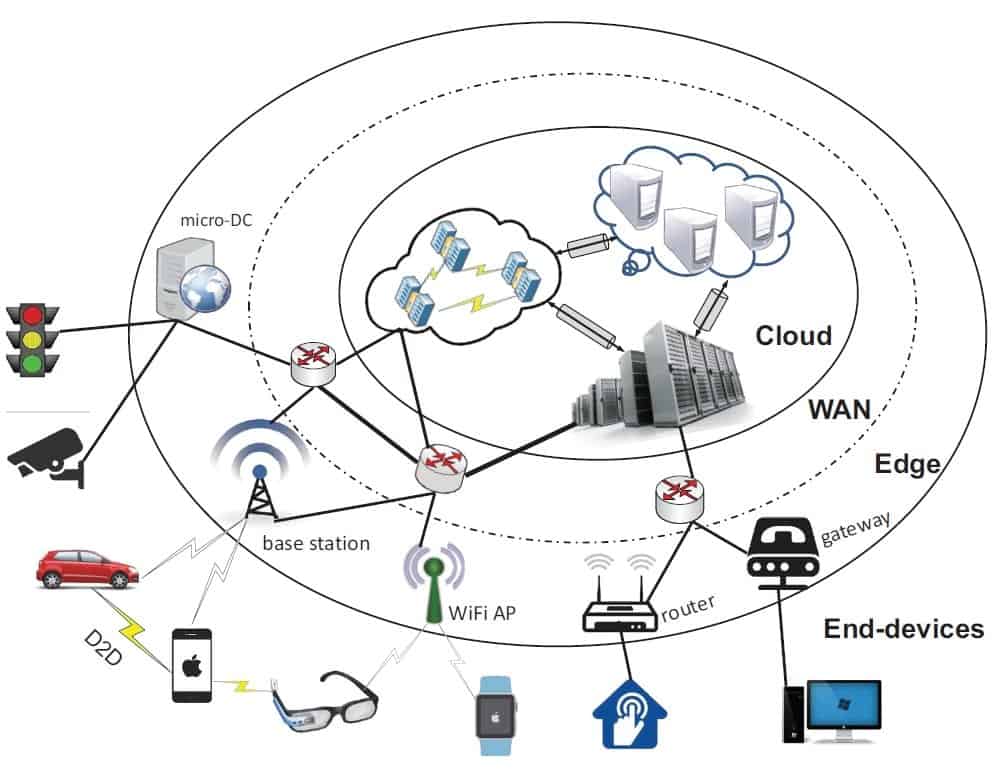
Companies must build edge infrastructure with the same level of reliability and security as they would a large, centralized data center. To provide secure, reliable, and manageable high-performance edge services, businesses rely on the following 5G aspects:
- Bandwidth – the amount of data generated by some IoT applications can be staggering, as can the cost of sending all the data to the cloud. Some applications (patient monitoring, cloud gaming, content delivery) require streaming large amounts of content, including high-definition video that makes 5G usage inevitable.
- Latency – Some applications require extremely low latency, which is the time it takes for a packet of data to travel to its destination and back. All safety-related applications, such as autonomous vehicles, healthcare, or manufacturing plants, require near-instantaneous response times. In these cases, 5G is an optimal option due to the low latency in the signal transmission process.
- Regulatory Requirements – In highly regulated industries and regions (such as Europe with the GDPR), the way personal data is processed is tightly controlled. This includes data storage, data transfer, and data processing. That’s why EU countries are reluctant to some 5G equipment providers.
Distributed Image Processing
By integrating the cloud into the network, the 5G system enables the local deployment of customized applications, closer to the end users. Researchers have done much in recent years to implement various AI applications over private 5G networks. CV techniques that perform image processing in various use cases utilize basic cameras linked to the 5G network.
The majority of existing CV solutions use fully centralized processing with long processing times and massive bandwidth requirements. In addition, they rely on sophisticated cameras with specialized software that results in costly solutions. Nowadays, some applications have one billion cameras connected, placing a significant network burden while handling the video feed.
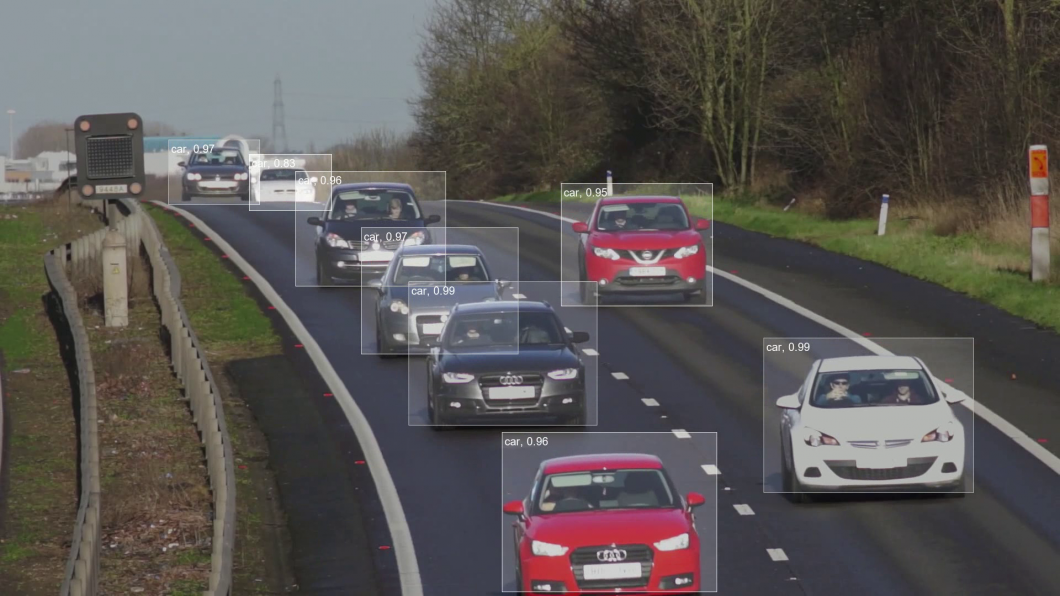
Placing the image processing close to the end user will reduce the 5G traffic since only the output from the CV algorithm will be transmitted over the line. As soon as the system raises an alarm, the remote operator will start transferring pictures or video feeds.
Moreover, this will not only save network bandwidth but also process data faster. This is important in some applications, such as traffic safety, where cameras can be installed to identify potential risks in moving vehicles. Two possible alert situations are vehicle misbehavior or human presence in unsafe locations, e.g., red lights.
Reliability can also be increased by implementing image processing locally, which is crucial in industrial processes. Any interruption or delay in the production flow that affects image processing would affect a factory’s throughput and directly affect the business.
Image Recognition Applications
Advertising firms collect information on the demographics that interact with their billboards at various locations to improve planning and outcomes. Nowadays, street surveys are the primary method for gathering this data following significant campaigns. Companies are now applying AI and computer vision to gather this data and, understandably, provide statistics.
Another use case is identifying a group of people through the camera when monitoring a remote work site. The analysis identifies people, and the algorithm determines if some workers don’t wear the necessary security helmets. For instance, the system will sound an alert if it detects an individual not wearing a helmet.
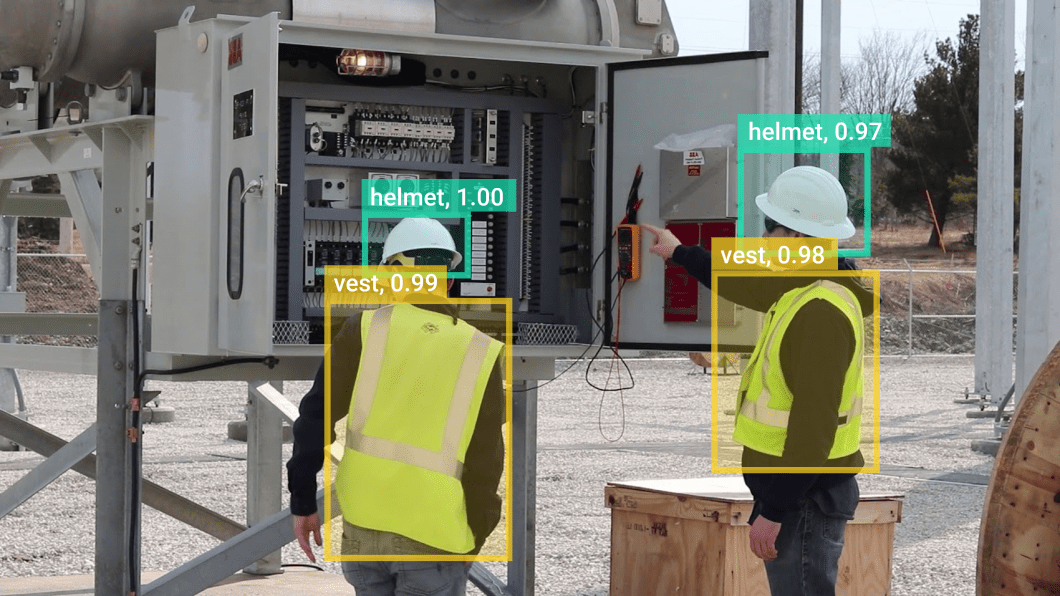
Security and Privacy Applications
Privacy is a crucial requirement in all video surveillance systems, particularly as computer vision systems become more powerful and recognize a wider range of features. In this case, 5G’s distributed cloud would be a tool. If engineers process video streams locally, they will resolve privacy issues and only send the outcomes to the control center.
An operator at the control center does the observation surveillance. A person who has been identified through video analysis is represented by a bounding box; nevertheless, the control center only receives the information that indicates the number of individuals identified and their positions.
The control center processes the anonymous video feed by overlaying the outcomes of the video processing on top of a scene taken from the camera. Therefore, the solution will only show the number of people present and their location. Thus, it will maintain individual privacy by ensuring that any sensitive information stays in the remote area.
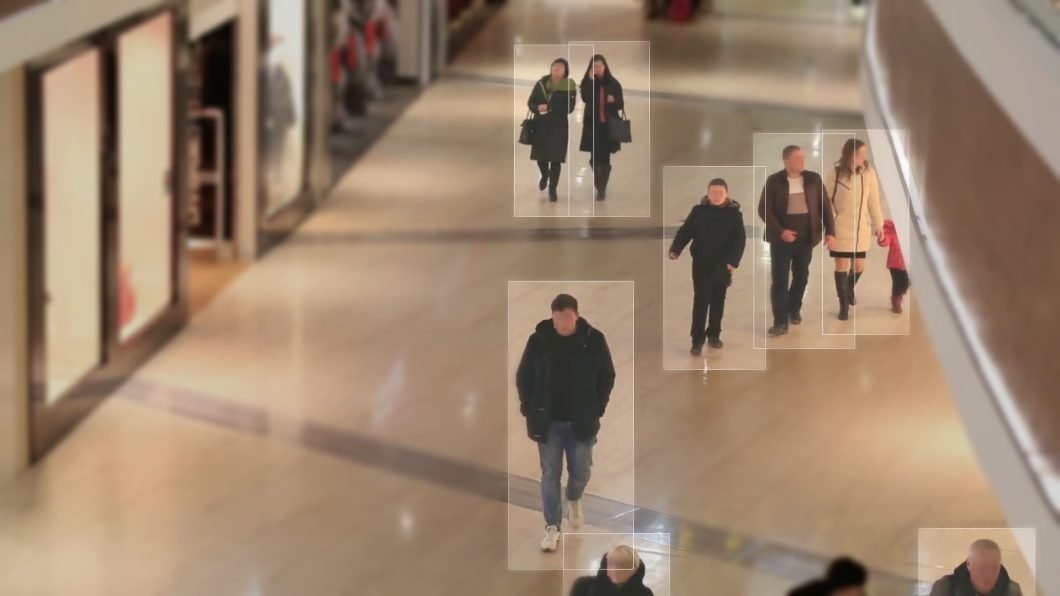
What’s Next With 5G Technology
With the increase of video conferences and calls, remote work, and general digital communication and exchange, it is necessary to establish a reliable and secure network, connection, and flow.
Many technology companies are providing mobile phones that support the 5G network, while mobile operators are already enabling 5G data transfer. The last step is to develop smart applications, with technologies like CV, IoT, AR, and VR that will utilize the full benefits from 5G.
If you enjoyed reading this article, check out our other blogs too:
- Squeeze and Excite Networks: A Performance Upgrade
- Introduction to Spatial Transformer Networks
- What are Liquid Neural Networks?
- Graph Neural Networks (GNNs): A Comprehensive Guide
